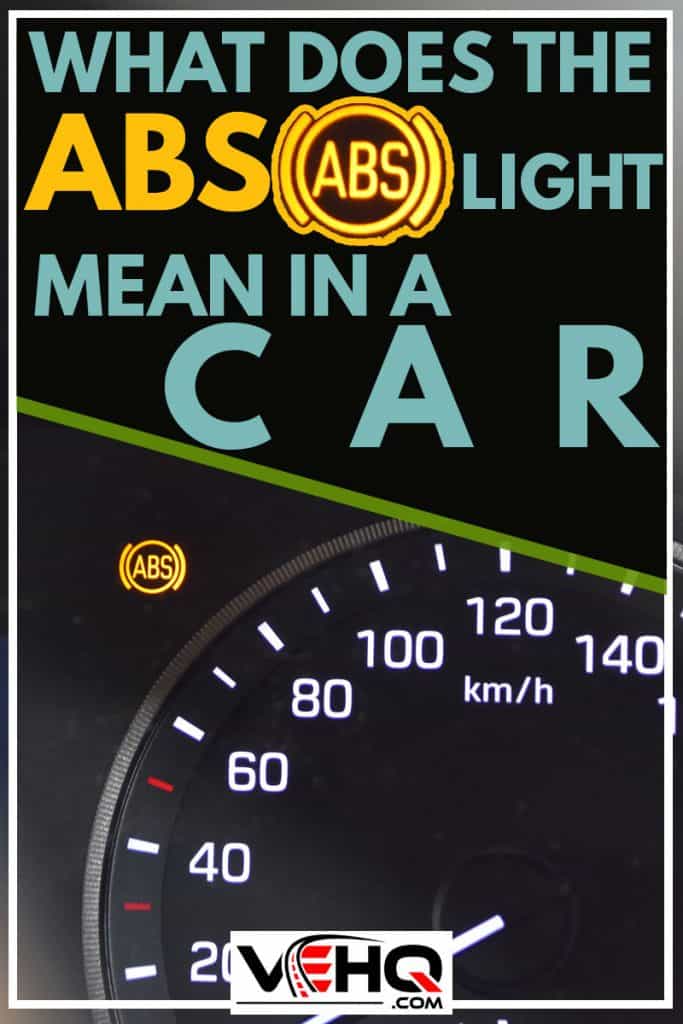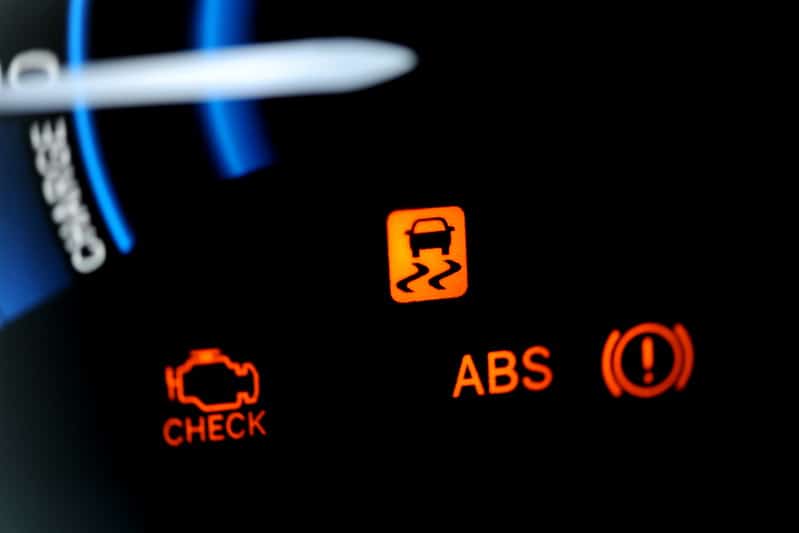 Maintaining an automobile is a reasonably easy task; there are routine maintenance responsibilities, and there are some of that are more in-depth. The lights on the dashboard are a relatively common indicator of issues, and you should pay attention to it. If you see the ABS light illuminate, what does that mean?
Maintaining an automobile is a reasonably easy task; there are routine maintenance responsibilities, and there are some of that are more in-depth. The lights on the dashboard are a relatively common indicator of issues, and you should pay attention to it. If you see the ABS light illuminate, what does that mean?
The ABS light is an indication that there is a problem with the vehicle's braking system. If you see the ABS light come on while you are driving, it means that the computer has detected a problem with the vehicle's braking system. You should have it diagnosed immediately, as it may not be safe to drive the vehicle.
There are several systems on a vehicle, and they are not always easy to understand. Have no fear if your ABS light is on. We scoured all the best sources to help find out all about your ABS.
What Does ABS Stand For?
ABS stands for the anti-lock braking system. It prevents the wheels from locking up and helps avoid uncontrolled skidding. Older cars that existed before ABS becoming common had issues with skidding and stopping distances.
If you drive an older vehicle, you may be familiar with the phrase “pump the brakes.”. In newer cars, you don't have to do that; the ABS applies and releases pressure to the brake pads in a uniform manner.
This improves vehicle control and decreases stopping distances on dry and slippery surfaces. By having a vacuum-driven or motor-driven hydraulic system to apply pressure to the brakes, much less force is required to slow or stop the vehicle, which is a good thing, especially when driving on icy surfaces. This is not the same thing as traction control, although the two systems can tie together.
How A Car's ABS system works
Your vehicle's ABS system includes the following components -
- Wheel speed sensors
- Brake calipers
- A hydraulic motor
- Pressure release valves
- A computer

Wheel Speed Sensors
These are a series of sensors that track the rate of rotation of a wheel. When all of them are working, that data is sent to a computer that monitors the rotation for issues. The computer can then apply the brake to any or all of the tires, allowing for better vehicle stability.
Brake Calipers
Brake calipers are a mechanical component of the brake system on most vehicles. When you press the brake pedal, hydraulic fluid is forced into the caliper. The caliper then squeezes the brake pad against the rotor, slowing or stopping the vehicle.
Hydraulic Motor
This is a component of the system that helps keep uniform force on the hydraulic fluid in the brake system. Some vehicles may use a “brake booster” to aid in this process, using a vacuum instead of a motor-driven force. This helps the driver by requiring less energy to be applied to the pedal to slow the wheels.
Pressure Release Valves
These valves open and close as the brake pedal is pressed, or when the system detects an issue in the instance of more modern vehicles with traction control or terrain assist.
Computer
Modern brake systems have their computer controls. The computer collects all of the data from the wheel sensors in real-time. It can then make adjustments to a single tire or several depending upon the needs. This helps the driver maintain stability and control in most braking situations.
How The ABS System Operates
While this system may sound complicated, it is not. The driver steps on the brake pedal, and a hydraulic motor or vacuum booster forces hydraulic fluid into the brake calipers, which then squeezes the rotor of the wheel, slowing the vehicle or stopping it.
Modern vehicles have a computer system that controls and monitors the brakes. In the event of ice or other such conditions, the computer will monitor wheel spin, and if one wheel is spinning faster than the others, the system senses a problem, and the machine itself can apply brake pressure.
Is It Safe To Drive a Car With ABS Light On?
If your vehicle is still able to stop safely, then it is relatively safe to drive with the ABS light on for a short length of time. This is an important safety system, though, so any issues that may be triggering the light should be found and dealt with sooner than later, or repairs could become costly.
If your vehicle has a system warning light that is separate from the ABS light and both of these are on, you have an emergency and should not drive the car.
How Do I Fix The ABS Light In My Car?
The answer to this is somewhat complicated, but here are the primary reasons that your ABS light will come on to help you start the troubleshooting process. If your brakes are overheating, this may also trigger the ABS light. Here is a great article about brake systems and overheating.
Low Fluid
If your brake fluid gets low, most systems are designed to trigger the indicator light on the dashboard the first thing you should check is low brake fluid. To do this, you will want to locate the master cylinder under the hood of the car and make sure that there is an acceptable level of brake fluid in the system.
Worn Brake Pads
If you have noticed a grinding or a squealing sound when you attempt to break and now the light has illuminated for the ABS, it may be time to change your brake pads. When the braking system indicator that there is an issue or a higher amount of force required to slow the wheel it may light up indicating that the brake pads need to be changed
If this is the case, it is better done sooner than later as the brake pads are the component of the system that applies the friction to the rotor, which slows the wheel. Waiting any length of time to change your brake pads as a bad idea as it may damage the rotor or the caliper and those repairs can be costly.
Caliper Damage
In the event you have damaged your brake calipers, the light will come on. The chances are that if you have damage to your brake calipers, you have been ignoring other warning signs, and your system is now not functioning as designed.
It is relatively easy to replace the brake calipers or the brake pads if you have some mechanical knowledge; however, if you do not have the experience or the tools, your local mechanic or dealership can undoubtedly assist you.
Wheel Speed Sensors
Wheel speed sensors are relatively sensitive electronic equipment, and they do fail from time to time. A failure of this nature will cause the light to turn on; however, you may not notice any actual problems with the braking performance of your vehicle. A shop is going to be the best place to get this diagnosed as in the tools and testing equipment is rather costly.
Ice Buildup
If you live in an area that experiences ice and snow, you will want to make sure that any ice and snow buildup is removed from the rotors and tires. This can cause issues with the ABS, including false readings for problems. For tips about driving on ice here is a great article!
Will Bad Brakes Cause ABS Light To Come On?
Bad brakes can cause the ABS light to illuminate. Any failure of the components in the system should cause the light to illuminate if you think that your brakes need replacement or you notice much fluid loss along with a lit ABS indicator you will want to replace those items quickly.
How Much Does It Cost To Fix the ABS?
The cost of repairs on the ABS will rely on several factors.
Make and Model
Some makes and models of vehicles require specialized components and upkeep. If you have a performance braking system, the cost will be a little higher.
Cost of Components
The part causing the failure in the system can affect the cost of the repair. Simple things such as replacement fluid are inexpensive and relatively common. Replacing the computer, on the other hand, will set you back quite a bit more.
Diagnostics
Locating the cause of ABS issues will add to the cost of repairs. Some problems may be easily identified, and others may require specialized equipment.
Labor
Once the issue is located, there will be a labor cost involved unless you are capable of performing the job. Some components are easily replaced, while others are much more complex and require specialized knowledge and tools.
Wheel sensors alone can cost anywhere from $100 to $200 per wheel. ABS computers and modulators can run from &600 dollars and up. A typical brake job will run anywhere from $200 to $400, depending on the shop that you have the work done.
Now that you have an idea of how the ABS works, you should be able to understand better the components and possible problems that can arise. Troubleshooting the system can be easy, and proper upkeep will save you a lot of money in repair bills.
